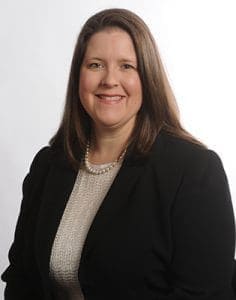Out of Research at UAMS HD Nursing Grows, Succeeds in Business
| Feb. 13, 2018 | Increasing success in preventing injuries to patients in falling accidents has resulted in ever rising licensing revenue for HD Nursing, a company started with help from BioVentures at UAMS.
“By the end of 2016, we were at about $250,000,” said Amy Hester, Ph.D., R.N., chief scientific officer for HD Nursing. “We doubled that in 2017, and already we’ve doubled that again in 2018.”
Not bad for a company whose founders initially were reluctant to go into business.
“BioVentures finally convinced us building a company around our research into patient fall accidents would legitimize to some degree the clinical content and its worthiness moving forward,” Hester said. “It would help us to touch a lot more lives faster than publishing a journal article and hoping people find it. They were right about everything. HD Nursing has been the vehicle for us to be successful with all of those things.”
A not-for-profit entity, BioVentures performs technology transfer and intellectual property commercialization activities on behalf of UAMS. The university assigns its rights in intellectual property developed by its researchers to BioVentures, which is responsible for commercially developing that technology. BioVentures also manages a laboratory-based incubator facility.
HD Nursing grew out of research Hester began in 2008 with research partner Dees Davis and a program they helped put into practice to reduce fall injuries among patients in the UAMS Medical Center. Hester also is director of nursing research and innovation for the medical center.
Crucial to their early work was a new UAMS clinical data warehouse, which provides access to de-identified UAMS patient data in a form that can be used for research. Established by the UAMS Translational Research Institute, the data warehouse (now the Arkansas Clinical Data Repository) made it possible for Hester to validate their patient falls prediction model.
“We predict who among patients is at risk of a fall, we prevent that fall from happening and then help them sustain those gains over time,” she said. “We implemented the full program in 2011 and reduced falls with injury by 60 percent and overall falls by 11 percent, saving UAMS Medical Center $1.2 million in one year.”
The next year HD Nursing was established as a company.
Hester said BioVentures played an essential role in making the founders feel comfortable with the idea of commercializing their findings and program, navigating legal issues like conflicts of interest and commitment and connecting with early investors.
Today, the company has three full-time employees. Hester is part time, and HD Nursing has a roster of 15 nurses who work as consultants that can flex up and down according to how much they want to work.
There are three principal ways HD Nursing makes money. First, it licenses the clinical content to the hospital. BioVentures receives royalties from the licensing revenue. Second, an implementation fee is charged to get a hospital or facility ready. Finally, the company charges support fees for consultations and troubleshooting.
Epic, the electronic medical records system used by most academic medical centers, works with HD Nursing and has integrated the company’s fall risk assessment tools into the Epic system. Those alert a nurse or physician using the system to when a patient has a high risk of falling and how to lower that risk.
Hester said they have a wide range of clients, from those already performing well to others struggling to produce good patient outcomes. One client had the highest fall with injury rates in the country and after their first quarter of using the HD Falls Program had their lowest rates ever as an organization and outperformed the national average. Another client was already nationally recognized for patient safety yet through implementing the HD Falls Program reduced their fall with injury rate by 68 percent.
Falls threaten the well-being of patients and can be a significant expense for hospitals in cost of care and legal liability.
In April, HD Nursing will mark its sixth anniversary.. The company has matured and is enjoying success, but that hasn’t meant the end of its working relationship to BioVentures.
“They also are a source of truth for many things for us,” Hester said. “As we grow and make decisions, we check to make sure we’re being compliant with university requirements. If we have questions, and they still come up, we can check with them. They are a big help with intellectual property.”
She said other UAMS researchers who have developed an innovative process or product should think about using BioVentures to see if it’s marketable and how they might follow in the footsteps of HD Nursing. Commercialization can be a great way to create positive change in health care and even personal fulfillment.
“We’re interacting with clinicians we never would have otherwise,” Hester said. “We’re touching patients through their hands. Even though we’re in central Arkansas in a rural state, our science reaches millions nationwide. Our company slogan is ‘The Science Behind Falls Management,’ but internally we say, ‘We save lives while we sleep.’ That feels really good.”

